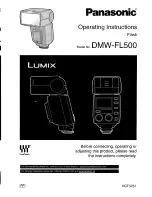
Regulatory Notices
This device complies with part 15 of the FCC Rules. Operation is subject to the following two conditions:
(1) this device may not cause harmful interference, and (2) this device must accept any interference
received, including interference that may cause undesired operation.
This Class B digital apparatus complies with Canadian ICES-003.
This equipment has been tested and found to comply with the limits for a Class B digital device, pursuant to
Part 15 of the FCC rules. These limits are designed to provide reasonable protection against harmful
interference in a residential installation. This equipment generates, uses and can radiate radio frequency
energy and, if not installed and used in accordance with the instructions, may cause harmful interference to
radio communications. However, there is no guarantee that interference will not occur in a particular
installation. If this equipment does cause harmful interference to radio or television reception, which can be
determined by turning the equipment off and on, the user is encouraged to try to correct the interference by
one or more of the following measures:
l
Reorient or relocate the receiving antenna.
l
Increase the separation between the equipment and the receiver.
l
Connect the equipment into an outlet on a circuit different from that to which the receiver is
connected.
l
Consult the dealer or an experienced radio/TV technician for help.
Changes or modifications made to this equipment not expressly approved by Avigilon Corporation or
parties authorized by Avigilon Corporation could void the user’s authority to operate this equipment.
Elevated Temperature Detection
Important:
Temperature measurements obtained by the H4 Thermal Elevated Temperature
Detection camera should not be solely relied upon to diagnose or exclude a diagnosis of COVID-19
or any other disease. Elevated skin temperatures should be confirmed with a secondary method
such as an FDA-approved thermometer.
Use the following guidelines when using the H4 Thermal Elevated Temperature Detection camera:
l
Public health officials should determine the significance of any fever or elevated temperature based
on the skin telethermographic temperature measurement.
l
The camera should be used to measure only one subject's temperature at a time.
l
Visible thermal patterns are only intended for locating the points from which to extract the thermal
measurement.
l
The blackbody is used as a thermal drift compensation reference source and is an important part in
obtaining an accurate temperature assessment.
iv





































